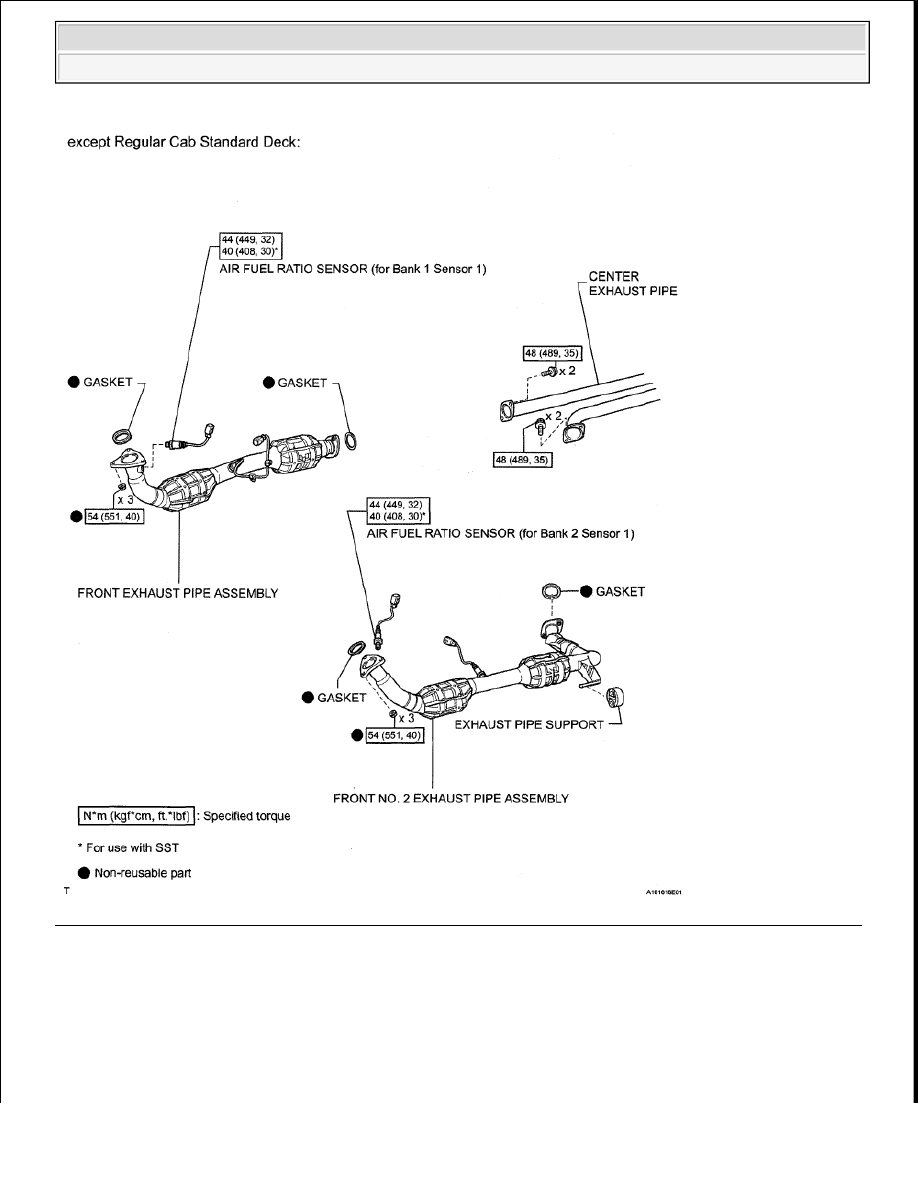Content .. 1290 1291 1292 1293 ..
Toyota Tundra. Manual - part 1292

Fig. 365: Identifying Air Fuel Ratio Sensor Replacement Components With Torque Specification (2 Of 2)
ON-VEHICLE INSPECTION
1. INSPECT AIR FUEL RATIO SENSOR
a. Disconnect the 2 sensor connectors.
b. Measure the heater resistance according to the value (s) in the table below.
2008 Toyota Tundra
2008 ENGINE PERFORMANCE Engine Control System (1GR-FE) - Tundra